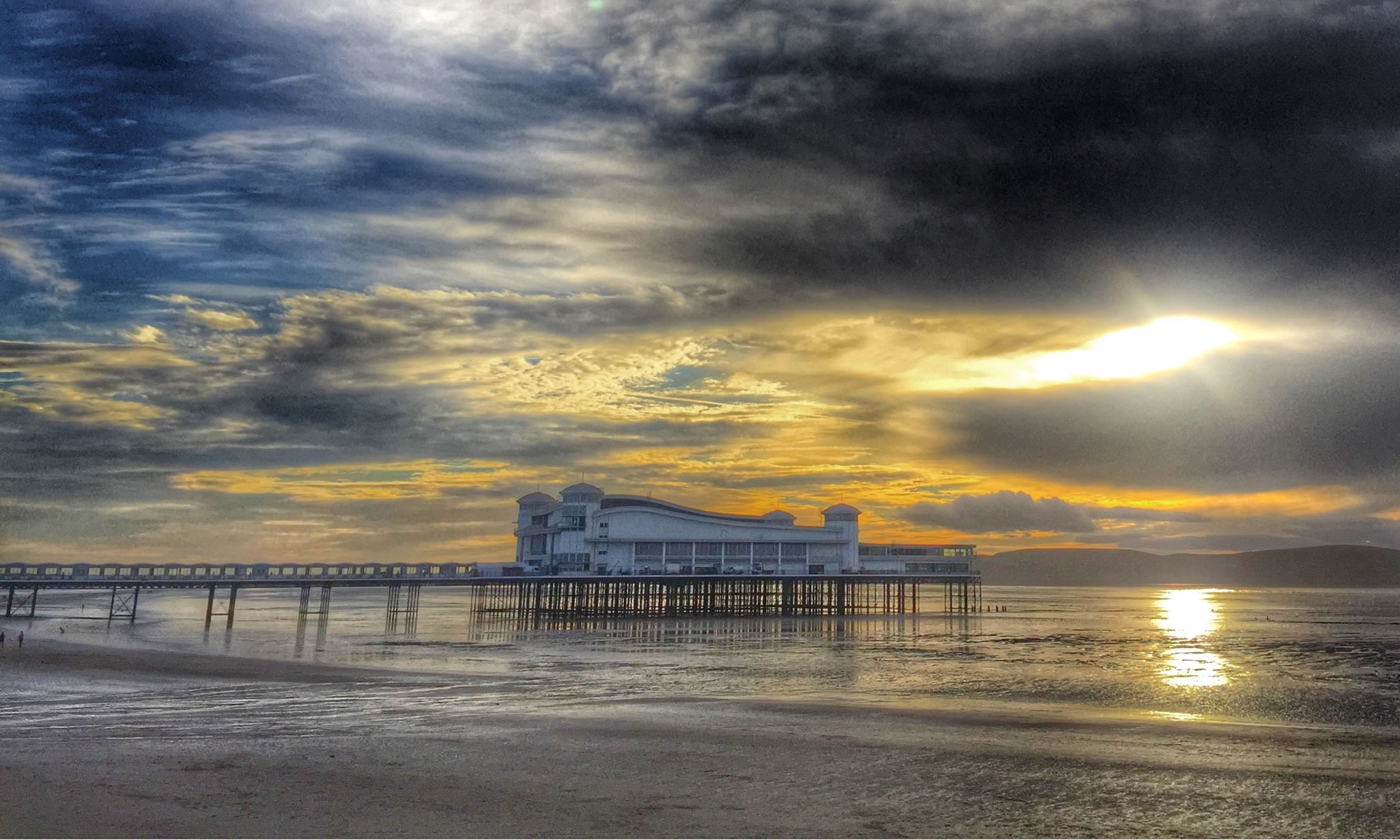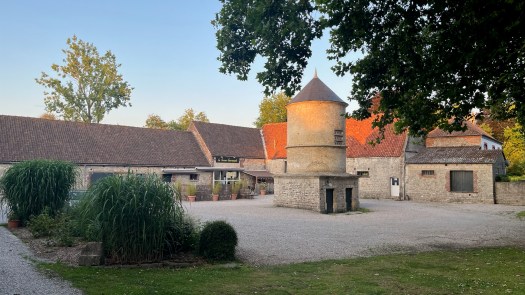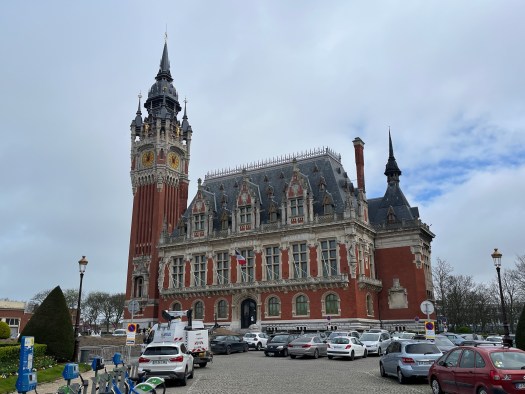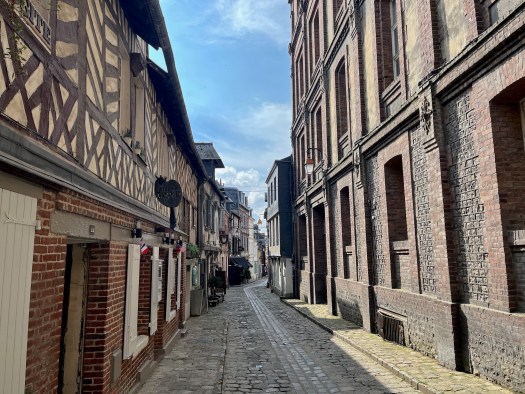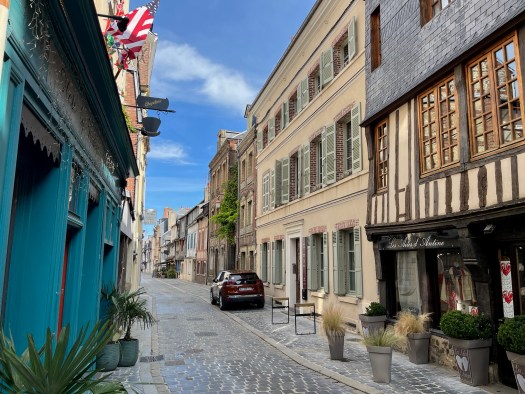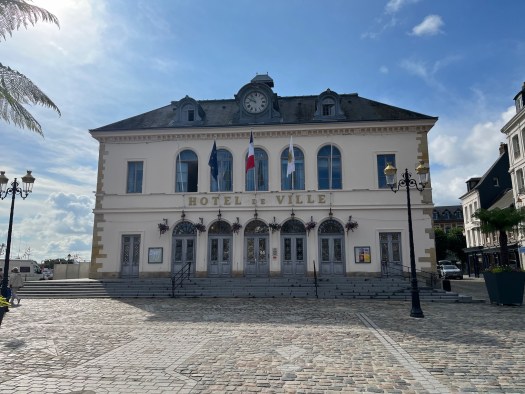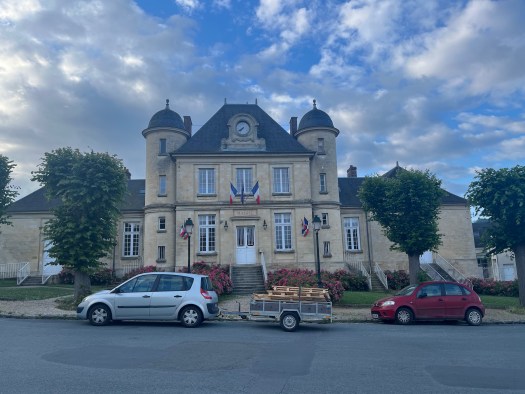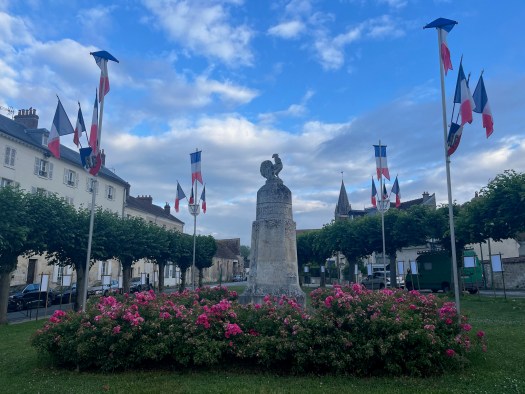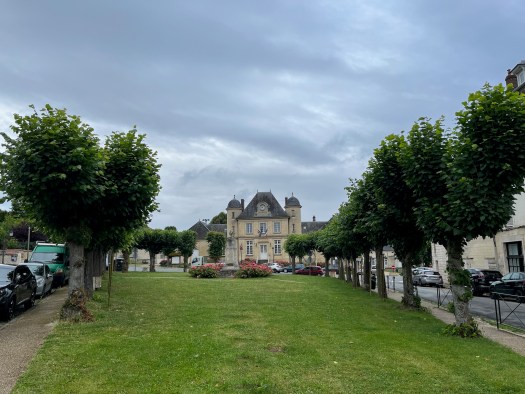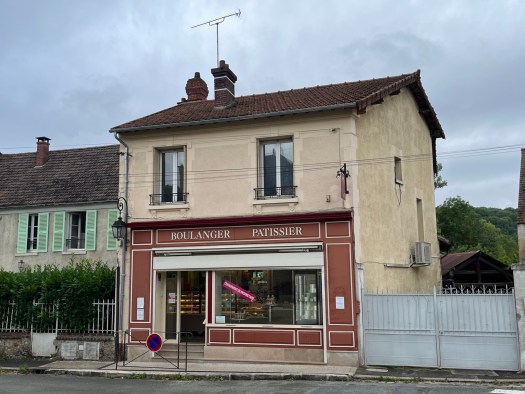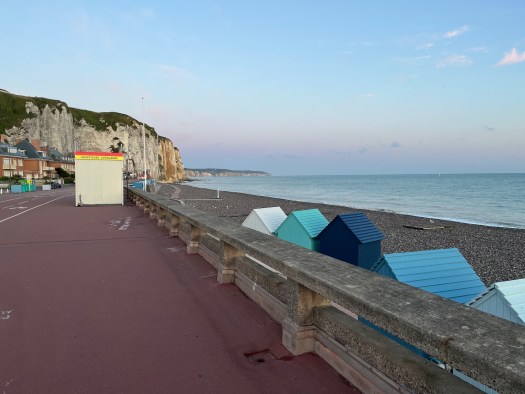DFDS had emailed an offer celebrating twenty five years of their Dover Dunkerque (Dunkirk) route, you could buy a ticket for a day trip for just £25. What a bargain I thought. The last time I had been on a day trip to France was in the 1980s. Then you either caught the Sealink, the Townsend Thoresen ferry, or a hovercraft!
I arrived at Dover in plenty of time for my 0800 ferry crossing. After passport control, I drove around to the DFDS check in. The man there said would I like to catch an earlier ferry to Calais at 0740, which would arrive fifty minutes earlier into France. I didn’t hesitate, would be nice to see Calais, which I had not visited since the 1980s, through had driven through a few times since after catching a ferry or driving through the tunnel.
Having spent some time in Calais I headed up the A16 to Dunkerque.
I had visited Dunkerque last summer on my way back from a driving holiday to France, Germany, Belgium and Luxembourg. We stopped and stayed there the night before catching the ferry the next day back to Dover. As a result I didn’t do much exploring and didn’t even have the chance to get to the infamous beach. So I had always planned to go back. The DFDS offer gave me that opportunity.
Having arrived in Dunkerque, I drove to the beach and parked. I went to the Operation Dynamo Museum which was excellent and good value at €8.
After exploring the museum I went for a walk along the promenade. Saw the infamous dunes of Dunkerque beach from where the 1940 evacuation had taken place. I had intended to walk quite a bit of the beach, stop for some food or coffee. However, it was getting colder and then it started to rain. A lot of places were closed as well. So, I walked back to the car.
After a quick visit to a supermarket, I headed to the centre of the town to do some more exploring.
After coffee, I decided I would go up the tower in the Beffroi Saint-Éloi de Dunkerque. There was a lift to the bells, but then you had to climb a very steep, narrow, low headroom spiral staircase. The views were impressive. I had to walk down the stairs backwards, so I didn’t bang my head.
As I left the tower it was raining. Went back to the place I had coffee and had another one. This time I had a dessert as well.
I did think about what to do next, but realised I was running out of time, the weather was unpredictable. So, I headed out of Dunkerque, but stopped at the large Carrefour. Lots of lovely things in there. I got a few more things and a loaf of bread, which I was expecting to be stale the following morning.
Left the supermarket with what I thought was just about the right amount of time, but I got to the terminal with plenty of time to spare.
At times it was quite surreal, knowing that I was only in France for the day
